Abstract
Denial and minimization in self-reports of cigarette smoking are probable common among youth and other groups where smoking is discouraged. Chemical measures may obtain more accurate measurement of smoking habits in those groups. One such measure, saliva thiocyanate (SCN), was evaluated in 1,419 eighth grade students. In that group, 54.9% of students admitted to regular smoking of greater than one pack/week had thiocyanates greater than or equal to 100 m g/ml compared to 2.3% nonsmokers at those levels. Of students who smoked greater than or equal to 10 cigarettes in the prior 24 hours, 66.7% were at or above 100 microgram/ml. Elevated SCN in nonsmokers was uncommon. Saliva SCN is a safe, inexpensive, and acceptable prevalence measurement for cigarette smoking. It can be used in place of self-reports to document smoking of greater than on pack/week in populations of youth.
Full text
PDF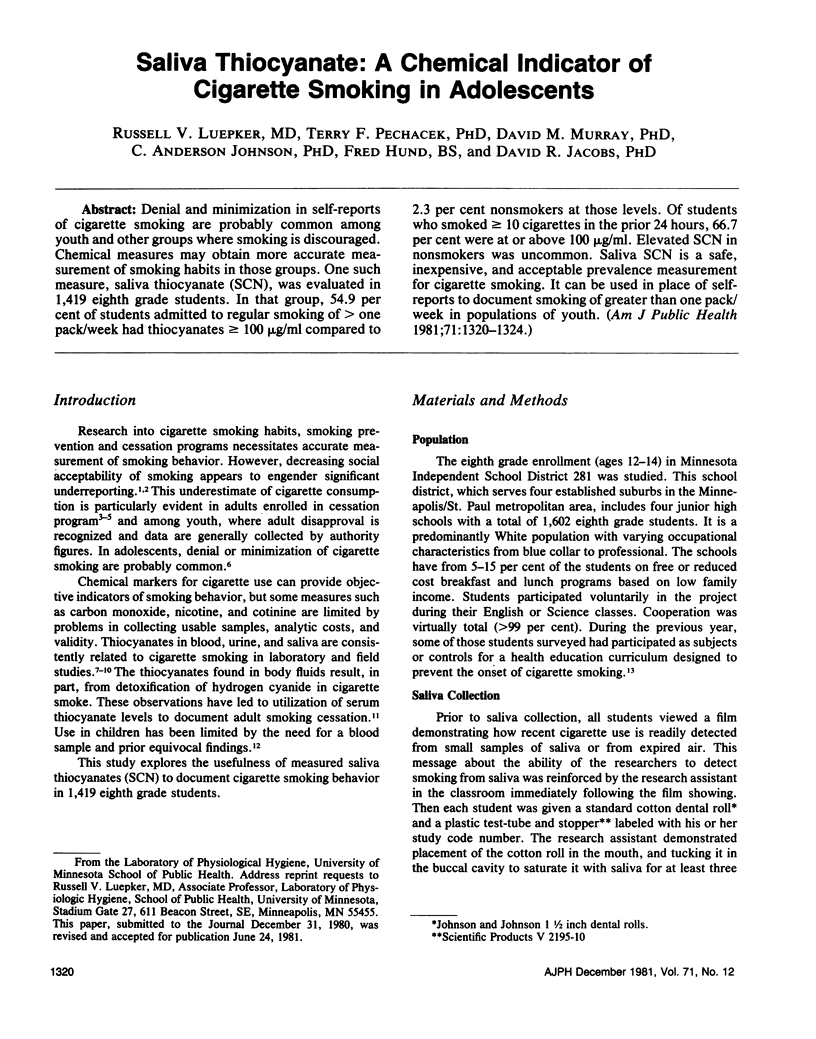
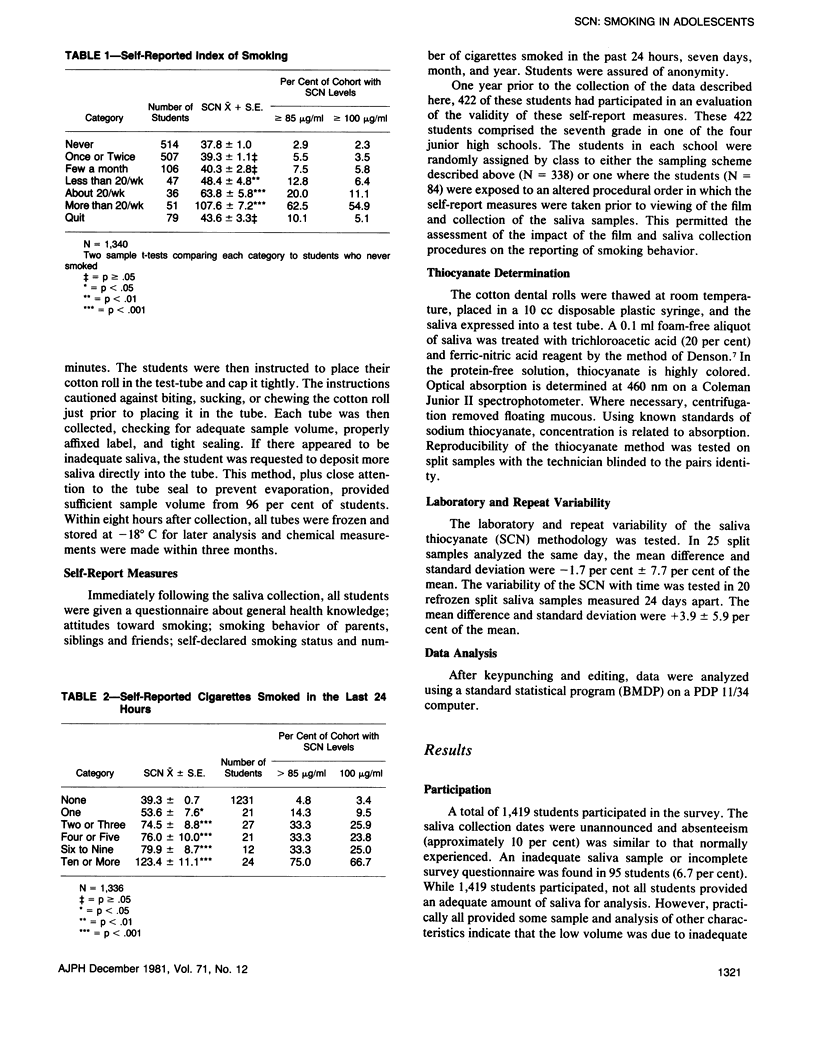
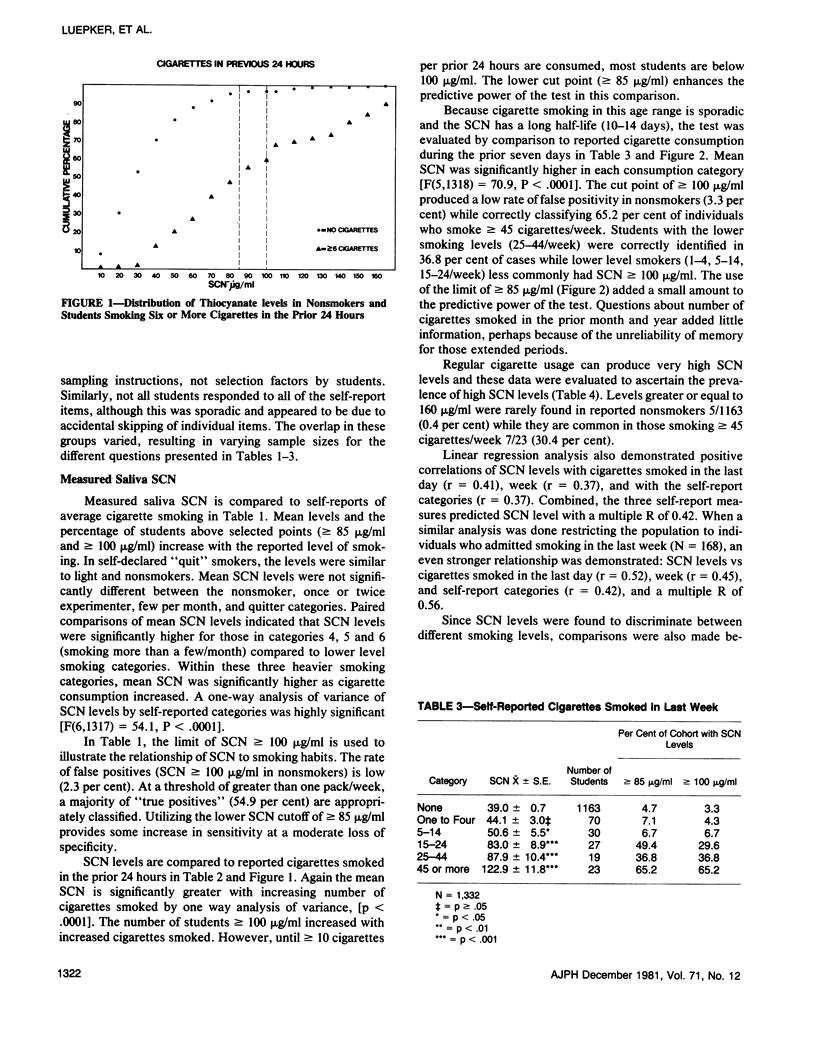
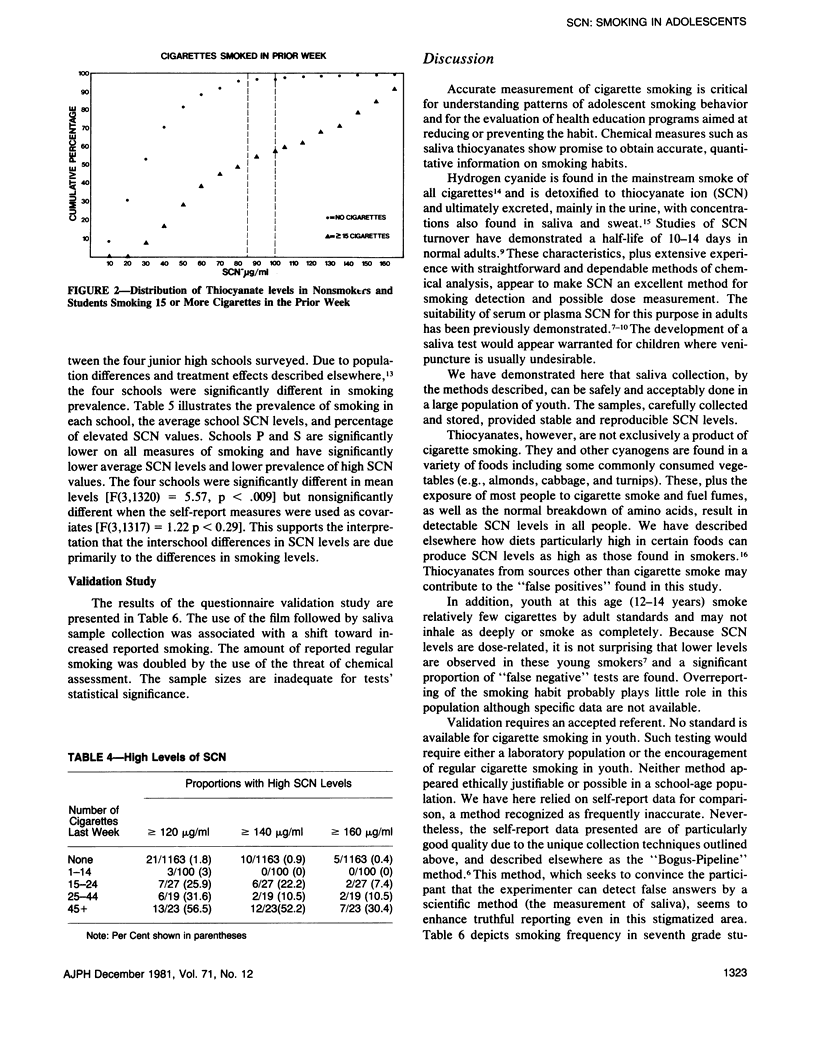
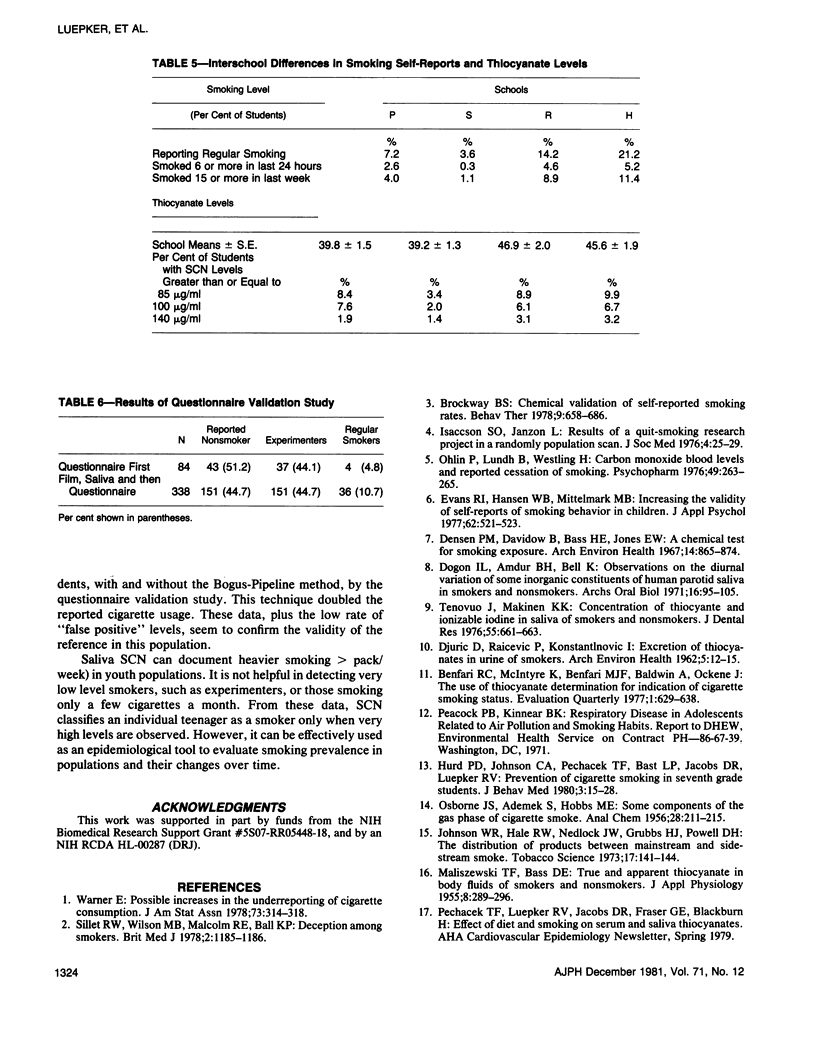
Selected References
These references are in PubMed. This may not be the complete list of references from this article.
- DJURIC D., RAICEVIC P., KONSTANTINOVIC I. Excretion of thiocyanates in urine of smokers. Arch Environ Health. 1962 Jul;5:12–15. doi: 10.1080/00039896.1962.10663235. [DOI] [PubMed] [Google Scholar]
- Densen P. M., Davidow B., Bass H. E., Jones E. W. A chemical test for smoking exposure. Arch Environ Health. 1967 Jun;14(6):865–874. doi: 10.1080/00039896.1967.10664853. [DOI] [PubMed] [Google Scholar]
- Dogon I. L., Amdur B. H., Bell K. Observations on the diurnal variation of some inorganic constituents of human parotid saliva in smokers and non-smokers. Arch Oral Biol. 1971 Jan;16(1):95–105. doi: 10.1016/0003-9969(71)90140-3. [DOI] [PubMed] [Google Scholar]
- Evans R. I., Hansen W. B., Mittelmark M. B. Increasing the validity of self-reports of smoking behavior in children. J Appl Psychol. 1977 Aug;62(4):521–523. [PubMed] [Google Scholar]
- Hurd P. D., Johnson C. A., Pechacek T., Bast L. P., Jacobs D. R., Luepker R. V. Prevention of cigarette smoking in seventh grade students. J Behav Med. 1980 Mar;3(1):15–28. doi: 10.1007/BF00844911. [DOI] [PubMed] [Google Scholar]
- Isacsson S. O., Janzon L. Results of a quit-smoking research project in a randomly selected population. Scand J Soc Med. 1976;4(1):25–29. doi: 10.1177/140349487600400106. [DOI] [PubMed] [Google Scholar]
- MALISZEWSKI T. F., BASS D. E. True and apparent thiocyanate in body fluids of smokers and nonsmokers. J Appl Physiol. 1955 Nov;8(3):289–291. doi: 10.1152/jappl.1955.8.3.289. [DOI] [PubMed] [Google Scholar]
- Ohlin P., Lundh B., Westling H. Carbon monoxide blood levels and reported cessation of smoking. Psychopharmacology (Berl) 1976 Sep 29;49(3):263–265. doi: 10.1007/BF00426827. [DOI] [PubMed] [Google Scholar]
- Sillett R. W., Wilson M. B., Malcolm R. E., Ball K. P. Deception among smokers. Br Med J. 1978 Oct 28;2(6146):1185–1186. doi: 10.1136/bmj.2.6146.1185. [DOI] [PMC free article] [PubMed] [Google Scholar]
- Tenovuo J., Mäkinen K. K. Concentration of thiocyanate and ionizable iodine in saliva of smokers and nonsmokers. J Dent Res. 1976 Jul-Aug;55(4):661–663. doi: 10.1177/00220345760550042001. [DOI] [PubMed] [Google Scholar]


